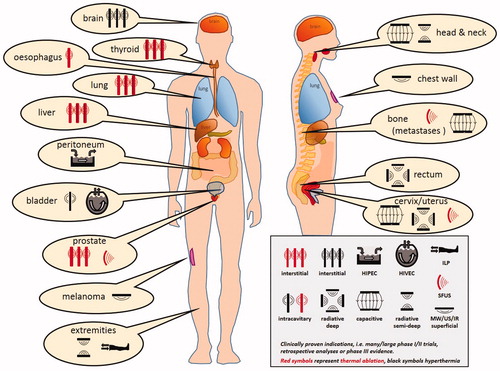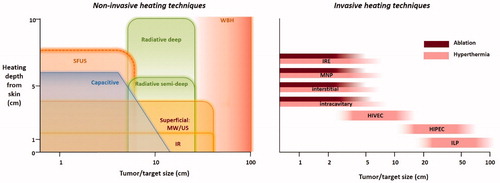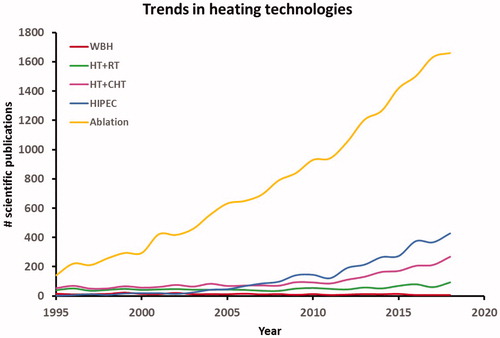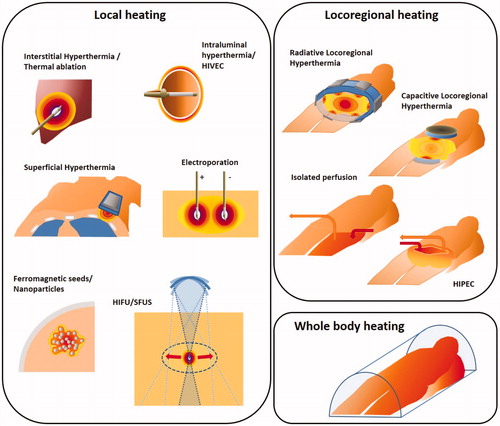Figures & data
Table 1. General summary of heating techniques, typical goal temperatures, treatment scheme and duration, as well as experimental (italic) and clinically proven applications.
Table 2. Overview of clinical applications of local, locoregional and whole-body heating techniques.

![Figure 1. (A) Characteristics of the three main treatment approaches in terms of temperature level. (B) Time to yield muscle fibrosis (continuous curve) or necrosis (dotted curve) at specific temperatures for hyperthermia and ablation (based on Dewhirst et al. [Citation20]).](/cms/asset/a654b620-b27f-4c4b-9139-b6a0a74c1433/ihyt_a_1779357_f0001_c.jpg)




